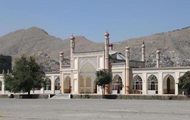Jakarta, CNN Indonesia —
The discovery of the skeleton of a young woman who has been buried for more than 7 thousand years or 70 centuries has revealed new facts about the history of early human migration.
This was known after archaeologists from Indonesia, Australia, and Germany had succeeded in analyzing the DNA of a fossil found in 2015 in Leang Panninge (Bat Cave) in the Mallawa area, Maros Regency, South Sulawesi, which is known to have DNA relationships with indigenous Papuans and Australians. at the moment.
One of the archaeologists involved in the research is Iwan Sumantri, Head of the Archaeological Laboratory at Hasanuddin University, Makassar.
The man who was born in Parepare, December 21, 1959, was first interested in the world of archaeologists when he studied psychology at Gadjah Mada University (UGM) in 1979.
Even though he only studied for four months at the campus, Iwan spent most of his time in the library. In the library Iwan was late reading the Encyclopedia Americana which opened up his archeological insights.
While studying for 4 months at UGM, Iwan had to return to his hometown in Makassar because his mother died. Since the incident, Iwan’s grandmother has warned him that he should only study there. As a result, Iwan entered the Indonesian Muslim University, Makassar, majoring in economics to please his parents.
In the following year, 1980, Iwan saw that there was a department of history and archeology at Hasanuddin University. Because of his interest in the world of archaeology, without thinking Iwan enrolled at the campus. His choice was met with opposition from his father because becoming an archaeologist was considered not to have a clear future.
The story of the discovery of the fossil of a 70th century teenage woman
In 2015, Iwan and his colleagues at the Department of Archeology, Faculty of Humanities, Hasanuddin University, conducted excavations at Leang Panninge. There they finally found the skeletal remains of a 70 century old young woman named Besse. Besse itself is a term in the Bugis language that is attached to girls.
“In 2015 excavations were carried out, under two meters we found the skeleton, along with stone artifacts and other tools,” Iwan told CNNIndonesia.com, Thursday (14/10).
Besse’s own limbs were found in the form of a skull that was not intact and not yet fossilized.
Iwan said that what was interesting about the discovery of Besse’s skeleton fragments was that they were not simply embedded. That is, he died not buried directly, but there seems to be a treatment for Besse’s body when it just died.
“It is proven by the presence of bearings, if it is proven by the existence of bearings, bearings under the head and above the head. And the bearings are made of stone. The rock is not the same as the structure of the cave. It is like a river stone,” said Iwan.
|
Besse fossil body parts found in Leang Paningge Cave. (REUTERS/STRINGER)- – |
At that time, the team of archaeologists from Hasanuddin University did not dare to lift Besse because they did not have the readiness to lift and store him. Furthermore, in 2016-2017 they only dared to carry out the appointment after they found a suitable methodology.
Then in 2019 Iwan and his colleagues invited Professor Adam Brumm from Griffith University. At that time, Adam Brumm already had a major project in South Sulawesi called Hominin in Wallacea. Adam Brumm is excited about it because it’s connected to a big project that’s been there for 10 years.
“Yes, this project has been running. In 2019 I participated in the excavation, for extended expansion, and the framework was removed. Then at my own expense, there were several people who came to analyze,” said Iwan.
Some of the researchers involved include David Bulbeck from the Australian National University who is an archaeologist in Sulawesi, to analyze the petrous (inner ear bone). Then there is Basran Burhan, PhD Student, Griffith University.
Basran expressed the opinion “can we not find the petrous and then we take it to the best laboratory?” Adam Brumm welcomed the idea. Petrous from Besse was taken to the laboratory of the Max Planck Institute for Evolutionary Anthropology, Leipzig, Germany.
The results of the analysis turned out to be DNA from Petrous Besse which had Denisovan DNA. Denisovans themselves are a group of ancient humans who were first identified in 2010. Denisovans are also distant cousins of Neanderthal humans whose fossils are only found in Siberia and Tibet. Some scientists know very little about them, even the details of their appearance are not widely known.
How did 70th century adolescent fossils change ancient history?
–
– .


